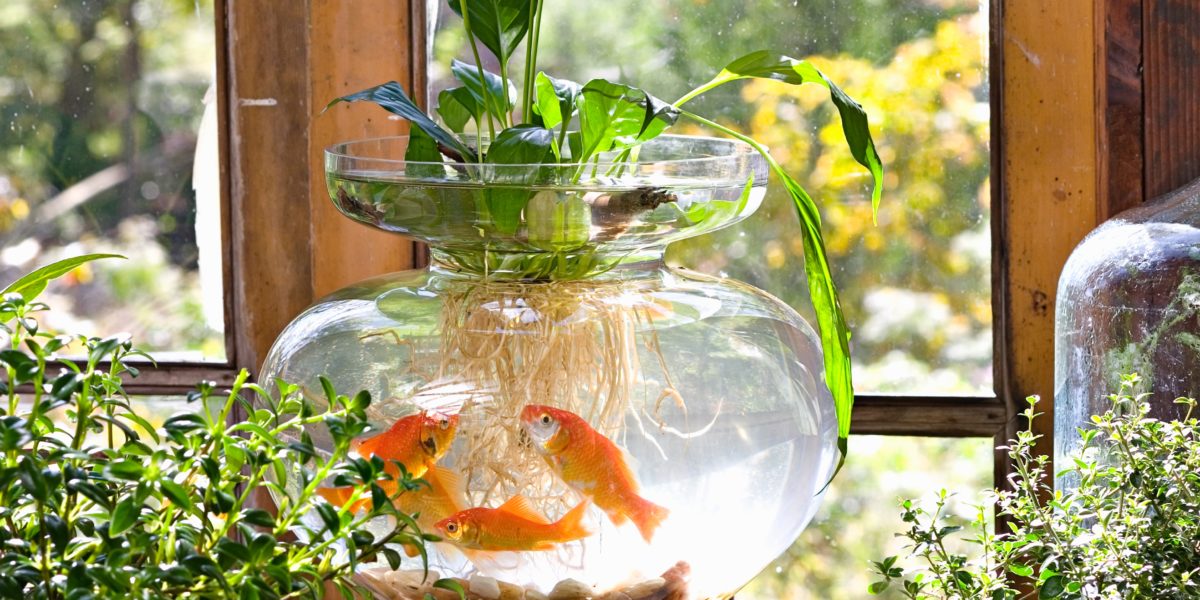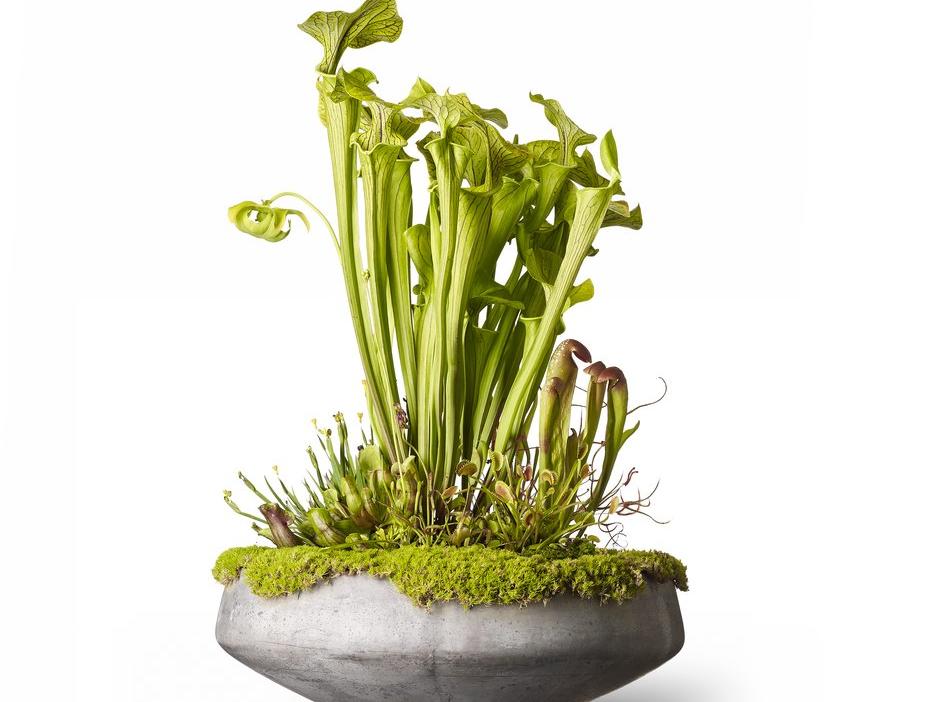
These Aquatic Houseplants Make a Splash Indoors
You can grow these pretty aquatic plants in a fishbowl—with or without the fish

If you love aquariums but don’t want to worry about keeping fish alive (or if you have a bad habit of overwatering your houseplants), you’re in luck! Indoor water gardens are quickly gaining popularity—even the houseplant subscription service House Plant Box (based in California) offers an aquatic plants option. Want to try your hand at growing your own watery oasis? Here are a few ideas we love.
Marimo Moss Ball
These adorable, furry little balls of algae look like they rolled right out of My Neighbor Totoro and into your heart. Not only are they revered in a dedicated festival by the Ainu people of Japan, but also they’re the ideal pet. In the wild, they float to the water’s surface to photosynthesize during the day, then drift back to the lake bed at night to sleep.
Carnivorous Plants

Any insectivorous plant makes a splendid addition to an indoor water garden. They all grow in marshy, boggy areas where their roots are always wet. Some northern pitcher plants are even cold hardy down to Zone 3. I keep mine in plastic nursery pots stashed inside a decorative watertight cachepot, but you can also group several potted water-loving plants together in a deep, wide tray on a layer of gravel; add some decorative rocks or moss to hide the plastic pots and keep a few inches of water in the tray at all times. Carnivorous plants grow best in a 50/50 mix of washed sand and peat moss to ensure moisture retention and acidic pH.
Houseplants That Don’t Mind Wet Feet
https://www.instagram.com/p/B2EIFyFAp3D/?utm_source=ig_web_button_share_sheet
There are plenty of other houseplants that do just fine with their roots in water—peace lily, spider plant, philodendrons, and pothos are fairly common and easy to grow hydroponically, but don’t overlook baby’s tears, which also loves being wet. Black elephant’s ear is another that grows in boggy soil in the wild; keep it in a plastic pot inside a water-filled cachepot (an old pickle crock works well and looks cool) with rocks or gravel on top of the soil.
Life Aquatic
True aquatic plants like parrot’s feather (Miriophyllum aquaticum), banana plant (Nymphoides aquatica), and the Madagascar lace bulb (Aponogeton madagascariensis; pictured in an IKEA Korken jar) live their entire lives submerged beneath the surface. You can find these in aquarium shops like The Wet Spot in Portland as well as some bigger pet supply stores. Since some of these plants naturally grow somewhat deep below the surface, they can handle lower-light conditions just fine, making them a great choice for dimmer rooms.
Across the Pond
Pond plants like water lettuce (Pistia stratiotes), water hyacinth (Eichhornia crassipes), and mosquito fern (Azolla filliculoides) can be grown on the water in a wine barrel pond, a fish tank, or any large bowl. Since these plants float on the surface of the water, you’ll get the biggest visual impact from displaying water lettuce alone in a glass vase (where the roots will be visible), adding the smaller plants along with a bigger anchor specimen, or grouped with plants that grow out of the water, like this incredible amphibious terrarium.
Propagate Your Own
https://www.instagram.com/p/B5Fl9REAkDw/?utm_source=ig_web_button_share_sheet
One easy way to get your indoor water garden started is to propagate some plants of your own. It’s super easy! Hilton Carter’s cradles (featured in his book Wild At Home) are serving up serious prop goals, but you can get the same look with glass test tubes in wooden racks from Amazon or your friendly neighborhood scientific supply company. Or just grow cuttings and aquatic plants in a row of Mason jars on your windowsill for a more laid-back (and affordable) indoor water garden vibe.
A quick word of warning: though some of these species are native to the West, many of these plants can become very invasive in natural waterways—if you have to dump them, please dispose of plants in your home compost, not in ponds or streams!
